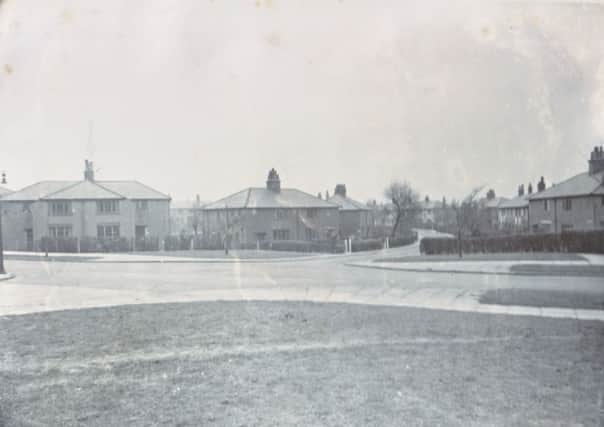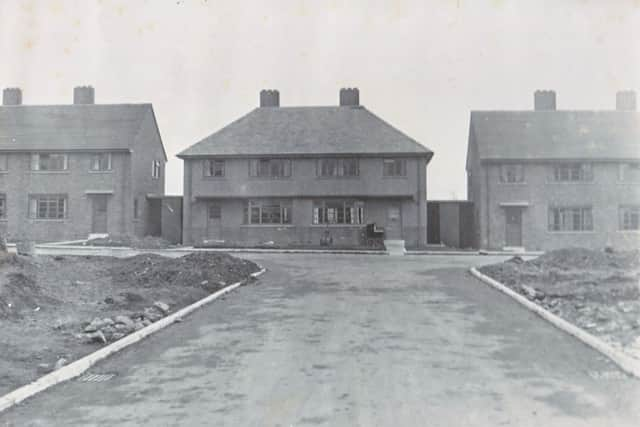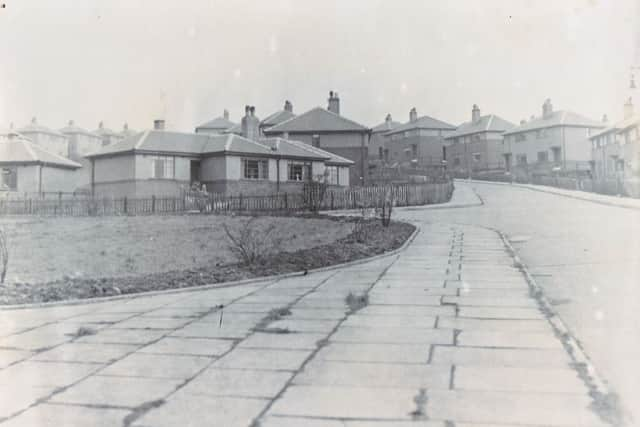Building homes ‘fit for heroes’ in Burnley


Neither of these schemes was typical of what we understand to be council houses today – the first were really small agricultural tenancies each of which had a residential property. The latter were 24 terrace houses which had been planned by a private builder who sold the unfinished project to the council for completion.
Articles 759 and 760 attempted to give the reasons why council houses were necessary and to explain why local councils were, for many years, reluctant to invest in better quality accommodation for the working classes. It was not until the mobilisation of the nation at the time of the First World War that the argument for the intervention of councils in the housing market became unanswerable.
Advertisement
Hide AdAdvertisement
Hide AdThe authorities were shocked at the health of many of the young men, some of them little more than boys, who volunteered so readily for the military. As the conflict progressed, people talked increasingly about, once the war was won, building “homes fit for heroes”, a phrase which did not mean the same to all its users but was useful none-the-less.


There was a consensus that the slums, which persisted in so many of our towns and cities, should be demolished and replaced by houses all of which would have hot and cold running water, bathrooms, properly-equipped kitchens with laundry facilities, separate sleeping accommodation and small gardens. These properties would be built in estates modelled on the few “garden cities” that had been built by forward-looking individuals and employers in such places as Saltaire, Letchworth and Port Sunlight.
The council houses that were eventually built did not all conform to the “semi with a garden” concept with which we are so familiar. From an early date, flats were built modelled on the designs of the Peabody homes which can still be found in some of our larger cities. None of this type of home was built in Burnley.
In Saltaire, many of the properties that Sir Titus Salt constructed for his workers appear, at first glance, to be little different to the stone-built terraces of Burnley and other northern industrial towns. What set them apart was the standards to which they were built and the facilities that were provided for the residents – schools, public open space, reading and meeting rooms, places of worship.
Advertisement
Hide AdAdvertisement
Hide AdSaltaire was unlike the vast majority of traditional industrial communities. It still had its great mills but was planned to meet the needs of the people who were coming to live and work there.


Sir Titus, one of the great industrialists of his day, was also one of its great social reformers. He believed that his workforce could not be content living and working in the slums of Bradford so he moved them, and his business, to what had been a green field site in the valley of the River Aire.
Sir Titus’ decision to construct the town which bears his name has been held to be a model for others to follow although it would be true to say that he has been criticised on at least one count, in that he did not allow pubs to be built on his estate. This was a deliberate decision on his part. He had seen the misery that alcohol had brought to many of the working communities of the North of England and was aware of teetotalism, which, at the time, was very influential.
In Burnley, although the council did not have the vision, or the resources, of Sir Titus Salt, his influence can still be detected. As indicated, Burnley’s first council houses were the stone-built terraces of Mansergh and Killington Streets. Harle Syke, which was privately rather than council built, is one of the largest places in the country never to have had a pub. The Nonconformists, who built the village, were as aware as Sir Titus had been of the evils of drink. They even set up their own non alcoholic crown green bowling club in opposition to two others (nearby but outside Harle Syke) which were based on pubs. When Stoneyholme was developed it was built without a single pub.
Advertisement
Hide AdAdvertisement
Hide AdThe war prevented the building of council houses but once it was over there was a great national desire to build the “homes for heroes” that had been promised throughout the conflict. In 1919, Burnley Council embarked on a landmark decision to build cottage-style council houses. Two sites were chosen, at Rosehill and Palace House, the first named being completed in 1928, the latter by 1929. Rosehill eventually had 460 houses and Palace House 210, although others were added between 1962 and 1964.
Other council estates were added as follows: Stoops 1927 to 1938, 540 houses; Barden 1929, 120 houses, Casterton 1933 to 1934, 156 houses; Hargher Clough 1935 to 1938, 528 houses; Bleak House 1936 to 1939, 140 houses; Plane Tree 1936 to 1939, 210 houses with others added in 1965 and 1972; Woodbine 1947 to 1950, 214 houses; Eastern Avenue 1947, 162 houses, with others added in 1953 and 1957.
Council house building did not stop there but I have not been able to get the figures for the later developments. These include the Brunshaw estate which was constructed between 1951 and 1958, with additions in 1961 to 1963; the Turf Moor estate which was built in four phases from 1955 to 1968, the Belvedere estate of 1967 and 1968 and the Trafalgar Gardens flats of 1968 to 1970.
Since that time, other council properties have been built and I am conscious that I have not mentioned the council properties of Padiham, Briercliffe, Worsthorne, Cliviger and Hapton, all of which had roles to play in improving the living conditions of local families.
Advertisement
Hide AdAdvertisement
Hide AdIn fact, it was not only local families that benefitted from Burnley’s council houses. I remember my father being part of a mission, organised by Burnley Council, held in the East End of London. Its intention was to attract key workers to Burnley and a new council house, at rents which were much less than residents of New Cross and Lewisham were paying to their private landlords, was to be made available to those who signed up.
In recent years, the terms “council estate” and “council houses” have acquired a degree of disapproval, even notoriety, they do not deserve. Fewer and fewer of us can afford to live in the property-owning democracy which is the ideal of the right wing – the bankers and politicians have seen to that. The “right to buy” has undermined the concept of social housing and the nation’s failure to build affordable houses has its own lamentable consequences.
There are other things about housing that annoy me – the understanding, by many of our people, that everything is satisfactory but only if property prices and land values are rising. Similarly, some look down on others whose properties are worth less than the national or regional average. Others lament the growing number of properties for rent and more cannot see a future for terrace housing.
In Burnley we have seen the end of the council house building era. There are now no council houses, in the proper sense of the phrase, in our town as the council handed its council houses over to the housing association now known as Calico.
Advertisement
Hide AdAdvertisement
Hide AdTo my mind, although I am not criticising Calico, this was a mistake. It must not be forgotten that Burnley’s council housing programme rescued thousands of our people from the slums of the past. It drew a line under the failed housing policies of the private sector and I hope the articles in this series have demonstrated that council housing was a necessity. Once again, the public sector, like the American cavalry, came to the rescue – and not before time.